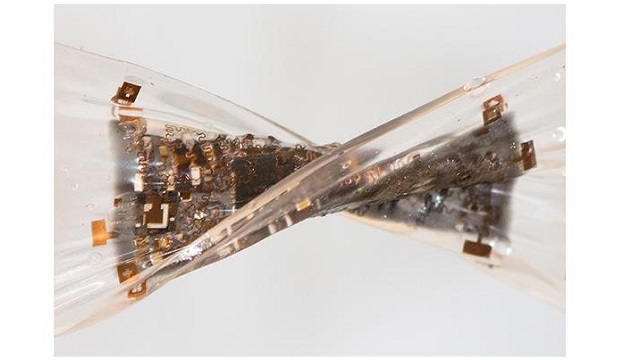The flexible device is put through its paces. A new stretchable, flexible biomedical device could lead to electronics as multifunctional and high-performing as today’s rigid devices, its creators have claimed.
Led by researchers at the University of California in San Diego, the team stacked and connected layers of stretchable circuits into a coin-sized device that is worn on the skin to wirelessly monitor signals from respiration, body motion, temperature, eye movement, and heart and brain activity.
Flexible electronics could be particularly useful for skin-mounted biomedical devices, which have to stay on and keep working as the skin underneath moves and stretches.
“Rigid electronics can offer a lot of functionality on a small footprint, they can easily be manufactured with as many as 50 layers of circuits that are all intricately connected, with a lot of chips and components packed densely inside. Our goal is to achieve that with stretchable electronics,” said senior author Sheng Xu, who was named as one of MIT Technology Review’s 35 Innovators Under 35 list in 2018 for his work in the area.
The new device is made of four layers of interconnected stretchable, flexible circuit boards. Each layer is built on a silicone elastomer substrate patterned with an island-bridge design of small, rigid electronic parts such as sensors and antennas connected by stretchy bridges made of thin, spring-shaped copper wires, allowing the circuits to stretch, bend and twist without compromising electronic function.
The prototype device contains a variety of sensors and can communicate with a smartphone or laptop up to 10m away.

